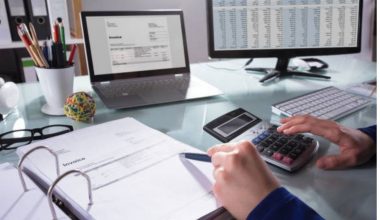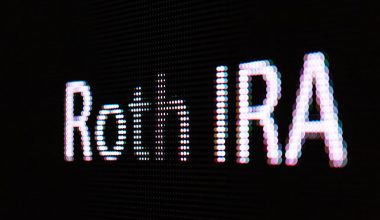Keeping tabs on your expanding company’s inventory, sales, services, and manufacturing processes is essential. The use of manual spreadsheets for team and accounting purposes needs to be increased. Fixed asset accounting comes into play when you need to upgrade your inventory control technique, which may involve purchasing new software the team can learn and use. However, the cost of a fixed asset, its periodic depreciation over its useful life, and its eventual sale are all elements of fixed asset accounting. Correctly accounting for a fixed asset, instead of deducting their purchase price as a federal tax deduction, provides a far more accurate picture of a company’s actual profit or loss. This article will discuss fixed asset salary, job description, and entry.
What Is Fixed Asset Accounting?
Fixed asset accounting is the process of capitalizing the purchase price, allocating the cost over the asset’s useful life via depreciation, and removing the fixed asset from the records following its disposal.
In order to facilitate the creation of their products and services, businesses invest in fixed assets. Fixed assets, in contrast to current or short-term assets, are investments that a company expects to keep for more than a year. What this means is that they are tangible, long-term assets for your company.
In addition, the term “fixed asset accounting” refers to the practice of maintaining a record of all monetary transactions involving fixed assets.
Understanding Fixed Assets in Corporate Accounting
Assets, debts, and stockholders’ equity all make up a company’s balance sheet. There is a distinction between current assets and noncurrent assets that is based on how long each type of asset will be used. The term “current assets” refers to assets that can be easily turned into cash in a time frame of one year or less. Assets and property possessed by a company that is not quickly converted to cash are known as noncurrent assets. They might include things like long-term investments, deferred charges, intangible assets, and fixed assets.
This word implies that these assets will be consumed or sold at the end of the reporting period. A fixed asset is an item of property, plant, and equipment on the balance sheet. In addition, there are many different motivations for businesses to invest in fixed assets.
- Manufacturing and service provision
- Lease to outsiders
- Application in a Workplace
How Do You Record Fixed Assets in Accounting?
When the cost of an item surpasses a threshold (the capitalization limit) and has a useful life that spans numerous reporting periods, it is considered a fixed asset. Listed below are some of the more common fixed-asset-related accounting transactions. Over the course of an asset’s useful life, you may need to perform a few of these operations multiple times. Here are ways to record fixed assets in accounting.
#1. Initial Inventories of Assets
The cost of the asset would initially be recorded as a credit to accounts payable and a debit to the appropriate fixed asset account if the financing was used to make the acquisition. When calculating the total price of an item, it is acceptable to add things like shipping costs, sales tax, set-up costs, evaluation costs, and so on. Structures, furnishings, fixtures, real estate, machinery and equipment, office furniture, and transportation equipment are all examples of fixed asset categories.
#2. Asset Depreciation
Depreciation entries are made on a regular basis to diminish the value of this asset. The most typical method for calculating depreciation is the straight-line method, which involves subtracting the projected salvage value from the cost and then dividing the remainder by the number of months left in the useful life of the item. The result is a debit to depreciation expense and a credit to cumulative depreciation, which is recorded each month as a depreciation charge. More of an asset’s depreciation can be written off early in its useful life using one of many accelerated depreciation procedures. The fixed asset accounting is lowered by the sum of the accumulated depreciation account and the fixed asset account.
#3. Disposal of Assets
Once a fixed asset has outlived its usefulness, it is either sold or scrapped. The fixed asset accounting will be credited to zero out any remaining balance and the accumulated depreciation account will be debited for the total of all depreciation charges made to date. Deduct the sale price from the cash account if the asset was sold. In addition, a gain or loss on the sale of the asset is then recorded to equal the difference between the two amounts.
#4. Asset Impairment
All significant fixed assets should be checked for impairment on a regular basis by the accountant. When an asset’s carrying amount exceeds its undiscounted future cash flows, an impairment exists. In this situation, the asset’s carrying amount should be adjusted downward by the difference, which is recorded as a loss. If there is any remaining carrying value, it will still need to be depreciated, though perhaps at a much more manageable monthly rate. At the tail end of an asset’s useful life, impairments are less likely to occur due to the substantial reduction in carrying amount that has resulted through continual depreciation.
What Is an Example of a Fixed Asset?
Here are some examples of fixed assets.
- Buildings and Facilities. Buildings and infrastructure that have already been built are examples of fixed assets. Until the building is finished, the materials and labor that went into it will be accumulated in a special account called “Construction-in-Progress.” At the end of the process, the asset is transferred to the fixed assets section of the books (accounting).
- Furniture, Fixtures, and Fittings. Office furniture consists of things like workstations, filing cabinets, and meeting tables. Items like fireplaces that are permanently installed are considered fixtures. Mirrors, lighting, and artwork are examples of fittings, which are also known as chattels in the UK and movables in Scotland.
- Computer Software. Enterprise software and platforms are the primary emphases of this type of software asset. Internally installed cloud apps are managed like any other software asset.
- Leasehold Improvements. Any improvements or additions made to a rented or leased asset qualify as a fixed asset. Among these are the plumbing, wiring, and electrical fixtures as well as any custom cabinetry that may have been installed.
- Tools. The financial foundation and the valuation threshold of the business will determine whether or not the tools employed in the business are considered fixed assets. A $12 hammer, on the other hand, would be considered an expense whereas a $1,500 insulated tool set or high-end drill bit set may be considered a fixed asset.
A corporation has a fixed asset if it owns and regularly uses some kind of physical object. But not all tangible objects qualify as fixed assets. In this sense, a laptop or desktop computer that is slated to be replaced every year is not considered a fixed asset because it will not be utilized for more than a year.
What Function Do Fixed Assets Serve in Businesses?
Several operational goals can be served by investing in fixed assets. The following are the most common types of use cases:
#1. Manufacturing Products
A company’s fixed assets are what allow it to turn raw materials into finished products. An important fixed asset for a coffee roasting company would be the roaster used to process the beans they source. The following are some other kinds of fixed assets that can be found in supply and commodities production:
- A furniture maker’s table saw
- The sewing machines of a niche clothing company
- The work vehicle of the maintenance staff
- A food production company’s small factories or plants
- A tattoo artist’s tattoo gun
#2. Third-Party Rentals
While some companies rely on operating with their fixed assets, others may rent them out to generate income. Case in point:
- A real estate firm owns multiple structures and rents out space in them to various tenants.
- Automakers not only sell vehicles to buyers but also provide leasing options.
- A farmer makes money by leasing out their barn for ceremonies.
#3. Organization
Finally, practically every firm makes use of some form of fixed assets to better manage day-to-day operations, whether it be to smooth over financial dealings, speed up production, or safeguard valuables. An electronic point-of-sale system, personal computers for the company’s management and customers, and a burglar alarm system are all examples of operational fixed assets that a small home goods store might have.
What Are the Benefits of Fixed Assets?
Businesses can benefit greatly from investing in fixed assets. A soldering gun is an indispensable tool for a jewelry manufacturer, for instance. The benefits of owning fixed assets are substantial, including:
- It’s useful for making money. For instance, the goal of a factory is to turn out finished products. Machines that are part of a company’s fixed assets aid in the manufacturing process. It is impossible for a company to achieve its goals if it is unable to sell the products it has developed. Assets like delivery vehicles help move products in a similar way.
- When a company needs money, it can use its assets as collateral for a loan. This makes it possible for companies to obtain financing.
- The value of a firm is evaluated by investors and creditors through the lens of its assets. After calculating financial ratios from financial statements, they decide whether or not to invest or lend.
- Capital-intensive businesses, like factories, give it a higher priority.
- Assets’ depreciation is averaged out throughout their expected service life. Therefore, costs can be spread out over a longer period of time.
Fixed Asset Accounting Entry
In accounting, when a fixed asset is sold, swapped, or otherwise no longer used in operations, it must be removed from the balance sheet. There are multiple balance sheet accounts and an income statement accounting that are impacted by the entry to dispose of a fixed asset. An essential part of maintaining a functional and accurate balance sheet is clearing out any old fixed assets that have been sold or otherwise disposed of.
Furthermore, a Journal entry may be required for a variety of additional transactions involving fixed assets, which can add to the complexity of fixed asset accounting. Say, for example, your barn wood boardroom table doesn’t outlive you and/or sell for a profit to a hip new homeowner. Somewhere along the line, you may determine that your table is too small for your expanding business, and decide to sell it, resulting in a transfer of funds from Cash (or Accounts Receivable) to Fixed Assets.
Alternatively, the table’s value could decline over time, resulting in an impairment loss if its market value falls below its book value. Consider writing down the value of the table on the books and reporting an impairment loss on the income statement if it sustains any kind of damage.
That is the proper way to book an entry for a purchase of a fixed asset in an accounting system.
Fixed Asset Accounting Job Description
A professional accountant is needed to efficiently perform accounting duties related to a fixed asset because of their modest complexity. A fixed asset accountant provides administrative support for fixed assets and capital spending, prepares special reports as needed, and does financial analysis of related projects and investments.
In addition to handling anything that comes up at the end of the month, he processes all transactions and reconciles accounts. All of his actions are compliant with the company’s procedures and any relevant laws and regulations.
What Does a Fixed Asset Accountant Do?
Accountants specializing in fixed assets are primarily responsible for keeping track of, valuing, and reporting on a company’s tangible and intangible fixed assets, as well as their depreciation and disposal.
The duties of a fixed asset accountant include looking into the possible obsolescence of firm assets and calculating their depreciation.
Equipment, buildings, and furnishings are all examples of the kind of pricey, long-lasting assets that make up a business’s fixed assets.
An expert in accounting for a fixed asset should be in charge of keeping track of these assets because they can add up to a sizable sum and have a major impact on a company’s financial statements.
The major job description of Fixed asset accounting is responsible for locating the organization’s fixed assets through the examination of vendor records and account payables.
Some of a company’s fixed assets may be easy to locate, while others may provide significant challenges.
Once an asset is located, the accountant will create the necessary journal entries. He or she will keep all relevant information, such as buying history, in its own files.
He or she calculates the appropriate depreciation of fixed assets by determining their useful life and salvage value. This will allow him to determine the annual cost of depreciating each item.
A fixed asset accountant checks the company’s fixed assets for theft, damage, or other concerns that could affect their use.
Also, a tag placed on a piece of furniture, for example, could help the accountant keep track of it and prevent it from being stolen.
In addition, an efficient method of maintaining track of a company’s fixed assets is for an accountant to assure their upkeep and regular monitoring rather than just a once-a-year inspection.
Fixed Asset Accounting Software
Fixed asset accounting is a feature present in many other types of software. The best fixed asset accounting software can be found by reading on. The primary functions of fixed asset management software are accounting and stock management. Hardware, software, and other office equipment are fixed assets since they are intended for long-term usage. Heavy machinery and warehouse space are examples of fixed assets for manufacturers.
Also, enterprise asset management, which maintains a consolidated inventory of a company’s physical assets, is related to fixed asset accounting software. Products like these make it easier for the accounting department to check the company’s assets and who is using them. Businesses must track the safe return of any equipment or supplies staff have the right to take off-site. In addition, accounting departments, inventory management groups, and warehouse managers in charge of significant pieces of equipment can all benefit from fixed asset accounting software.
Overview of the Best Fixed Asset Accounting Software
Here is the top fixed asset accounting software you can consider for your business.
#1. Striven
Striven is a cloud-based enterprise resource planning (ERP) platform suitable for enterprises of all sizes and industries. It can be used for a wide variety of business processes, including financial accounting, stock control, employee administration, customer relationship management (CRM), and project management.
A company hub, calendar integration, internal newsfeed with social media integration, dynamic feedback tools, external action triggers, dashboard personalization, a resource navigator, custom reports, and much more are all part of Striven’s suite of business management solutions. It also includes surveying and business analytics tools for use in the field.
However, Google, Microsoft, Authorize.Net, Yodlee, and ShipStation are just some of the services that can sync with Striven. Striven allows its users to log in from any device, any location. No time is wasted waiting for updates because they happen instantly. Striven’s monthly subscriptions feature unlimited phone, chat, email, and online ticket support for a fixed price per user.
#2. Multiview
Multiview Financials is the flagship enterprise resource planning (ERP) system that Multiview Financial Software creates, sells, implements, and supports. Also, Multiview caters to businesses of all sizes in North America, from startups to multinational conglomerates.
Multiview’s Enterprise Resource Planning (ERP) is a set of financial applications powered by traditional Core Accounting procedures. The general ledger, accounts payable and receivable, financial reporting, forecasting, and budgeting fall under this area. Purchase Orders, Inventory Management, Workflow, and Fixed Asset Accounting are just some of the financial applications that this software can offer. The open application programming interface (API) allows the system to integrate with third-party applications and adapt to preexisting business procedures.
Also, there is a one-time setup fee and a licensing fee for each individual user of Multiview. Multiview’s prices are all-encompassing, including things like limitless and tiered software and technical support with licensing.
#3. Denali Business
Denali Business, developed by Cougar Mountain Software, is an adaptable accounting system that features ten separate but interconnected modules. It’s flexible enough to work either on-premises or in the cloud and is designed for small and medium-sized enterprises. Features such as rental equipment tracking, GAAP and FASB compliance, and user-specific permissions and audit trails are also important. The three main features of BI are dashboards, predictive analytics, and real-time notifications.
Also, accounting features such as auditing, reporting, data analysis, and multi-location inventory management are included in Denali Business. Nonprofits can use Denali Funds to keep track of their grants, donations, events, and other administrative expenses. The product can aid companies in tracking and managing the circulation of company assets. Multiple invoices, client details, and payment status can all be managed with ease. Payroll, purchase orders, and bank reconciliation are just some of the additional services that can be purchased as needed.
#4. Aplos
Aplos is a cloud-based solution tailored to meet the requirements of religious and charitable groups. The Aplos platform features accounting, online donation management, reporting, fundraising, membership, event, and communication functions.
Furthermore, Aplos provides tools for direct double-entry accounting, which includes managing funds, reporting transactions, managing finances, tracking cash flows, and creating journal entries. Users can use online donation tools, individual correspondence, donor database reports, and event registration to generate funds. With Aplos, businesses may consolidate their donor, financial, and accounting data into a single system.
Aplos is designed for groups of varying sizes, from single-site churches to multi-location ministries to NGOs and service clubs.
#5. Jedox
When it comes to planning and performance management, Jedox is unparalleled in its flexibility, allowing businesses to exceed customer expectations with every plan they implement. Model any scenario, combine data from any source, and streamline cross-departmental strategies across all enterprise platforms using FP&A and broader integrated business planning. All departments—money, people, products, and services—share a common hub. Jedox encourages self-confidence and quick decision-making, enabling teams to seize opportunities, adapt to changing conditions, and explore new options.
These three features are what set Jedox apart:
Jedox is the most flexible planning and performance management platform in the world. It connects Finance, Sales, and every other unit in the company through unified strategic planning.
In addition, to develop a cohesive strategy and a single source of truth fueled by all the relevant data, Jedox integrates data from any source across all business systems.
What Is the Difference Between a Fixed Asset and an Expense?
A fixed asset is any physical item acquired for use in a firm. The company plans to keep these things in storage for at least a year. Fixed assets are things like land, buildings, cars, and equipment that are used frequently. Expenses, on the other hand, typically include spending money on something that will be used up quickly.
Fixed Asset Accounting Salary
As of the 16th of May, 2023, a Fixed Asset Accounting in the United States may expect to earn an average salary of $71,945 per year.
If you need a quick wage calculation, that comes out to about $34.59 per hour. That’s the same as $1,383 every week, or $5,995 per month.
Furthermore, ZipRecruiter reports annual Fixed Asset accounting professional salaries between $106,500 and $37,000, with the median salary sitting at $60,000 and the 75th and 90th percentile salaries at $80,000 and $100,000, respectively. The wide variation in salaries (as much as $20,000) for Fixed Assets Accountants shows that there are likely numerous prospects for promotion and raises based on one’s level of expertise, geographic location, and length of service.
Also, Recent Listings for Fixed Asset Accountants in Dallas, TX, and its environs on ZipRecruiter indicate a robust employment climate in this sector. The average annual compensation for a Fixed Asset Accounting professional in your region is $70,282, which is 0% less than the national average annual salary of $71,945. In terms of salary for Fixed Asset Accounting professionals, Texas comes in at number 47 out of the 50 states.
ZipRecruiter scans its database of millions of local US jobs to generate a fixed asset accounting salary range.
Some Dos and Don’Ts for Fixed Asset Accounting
- When deciding which assets to include in fixed asset accounting, try using the “12-month or more usefulness” factor.
- When there are many fixed assets to keep track of, it’s helpful to have a system in place for assigning unique identifiers to each one. Think about implementing scanning methods for specific assets, such as quick response (QR) codes, barcodes, serial numbers, etc.
- It is important to make sure that estimates and assessments are changed and updated as needed, as certain fixed assets may experience a change in value due to unforeseen conditions or events.
- In your fixed asset accounting record, be sure to note important details like the asset’s location and any special care it may require, as well as insurance information.
- Value assets over their full expected lifespan, not simply their usefulness to the company.
Tips for Improving Your Company’s Fixed Asset Accounting
In order to ensure that you are making the most money possible, it is important to have a firm grasp of the fundamentals of fixed asset accounting.
#1. Set a Minimum Capitalization Level
If your decision-makers correctly decide on a fixed amount for capitalization at the initial purchase, you can rest assured that your accounting books will be universally consistent and that you and your team will catch any accounting errors quickly.
#2. Checking the Usefulness of Old Machinery
Your company will benefit considerably in the long term if you accurately predict the amount of time you will be able to use your fixed assets for their intended function. Life estimates are significant for accounting and depreciation, so it’s important to review them as needed.
#3. Identify and Label Your Assets
Since the worth of your assets can be affected by a wide variety of factors during the course of their existence, tracking and tagging them is crucial. Tagging is an essential tool for safety, preventing lost or stolen items, and keeping track of expenditures.
#4. Fixed Asset Accounting Software Helps Automate Analysis
Fixed-asset accounting software streamlines operations by replacing time-consuming manual tasks. Password protection is another way to ensure that only authorized users have access.
It is vital that your team has the proper fixed asset accounting software in place to have the best opportunity of maintaining transparency throughout lifecycles, notifying the appropriate stakeholders on any maintenance issues, and recording the state of your assets at any given time.
Conclusion
Any physical asset that a business owns and puts to use in its day-to-day operations is considered a fixed asset. PP&E for assets not likely to be sold or used within 12 months may appear on the balance sheet. Depreciation is applied to fixed assets to reflect their declining worth over time, while amortization is applied to intangible assets. Comparisons between fixed and current assets are common. Current assets are those that can be quickly converted to cash or utilized within a year.
Fixed Asset Accounting FAQs
What Items Are Fixed Assets?
Long-term investments like machinery, buildings, tools, furniture, and computers are examples of fixed assets. Because of the lengthier time period during which they will be valuable to the organization, these assets qualify as noncurrent assets on the balance sheet.
What are the 3 types of assets?
Assets can be categorized as either operating or nonoperating, and further broken down into the categories of convertibility to cash, intangibility, and physical presence. Fix assets are long-term operational assets that can’t be quickly converted into cash.
Similar Articles
- BONUS DEPRECIATION: Definition, Example, and Rate For 2023
- DEPRECIATION: Definition, How to Calculate It, and Causes.
- TERM LOAN: Meaning, Companies, Online & Bad Credit
- IT ASSET MANAGEMENT: Meaning, example, systems & software
- HOW TO CALCULATE CAP RATE: Cap Rate Calculation Explained With Formula






